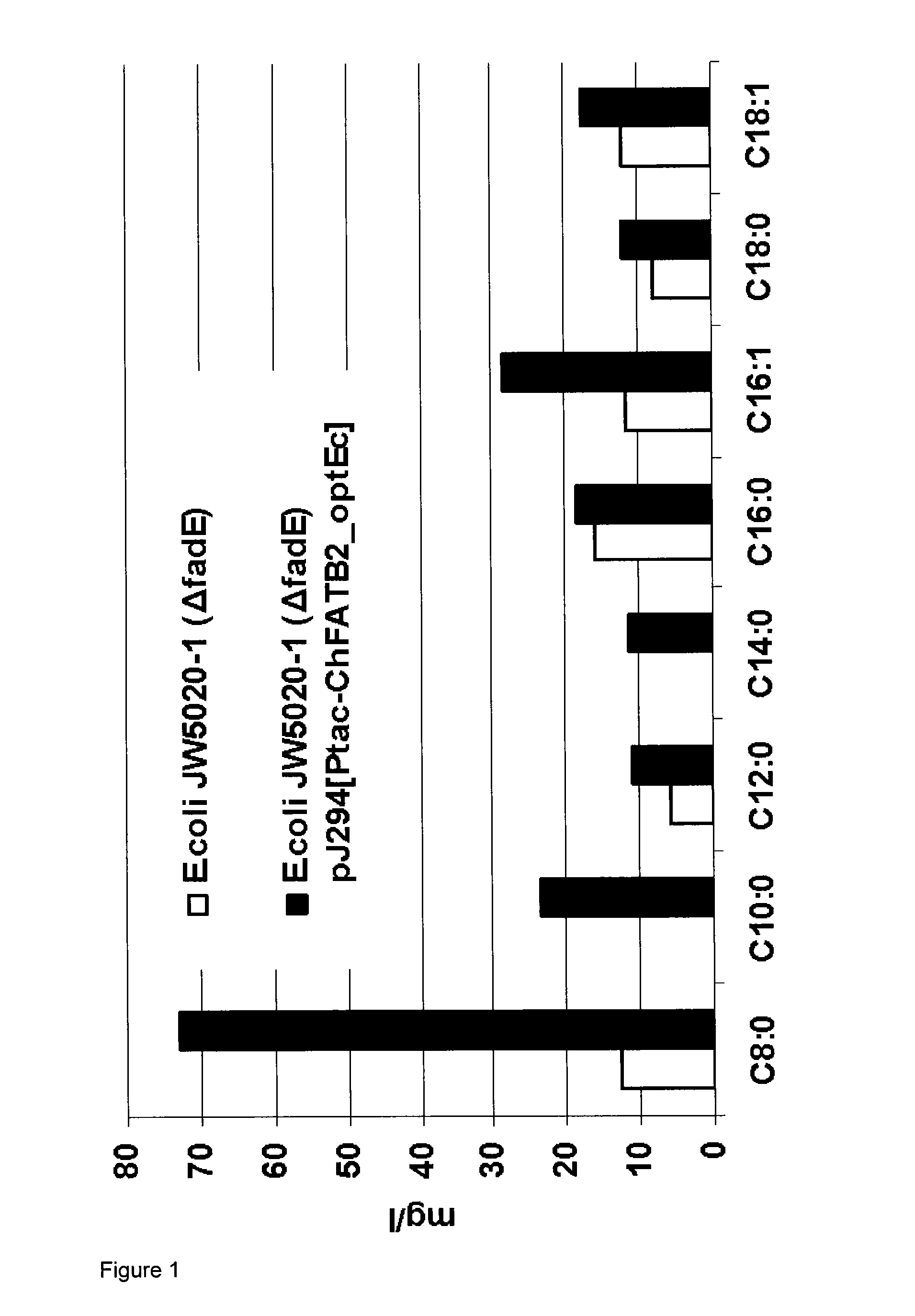Multi-stage synthesis method with synthesis gas
a synthesis method and multi-stage technology, applied in the field of multi-stage synthesis methods with synthesis gas, can solve the problems of lack of genetic accessibility, hindering the desired manipulation, and difficult to combine the sum of all the advantages associated with synthesis in one cell, so as to achieve high carbon yield, favourable raw material, and greater flexibility
- Summary
- Abstract
- Description
- Claims
- Application Information
AI Technical Summary
Benefits of technology
Problems solved by technology
Method used
Image
Examples
example 1
Process Step A) Acetate and Ethanol Formation
[0081]A live culture of Clostridium carboxidivorans DSMZ 15243 was charged to a 1 l anaerobic bottle in 200 ml of modified PETC medium as per Hurst consisting of 1 g of yeast extract, 19 g of MES, 30 ml of mineral salt solution, 10 ml of trace element solution, 10 ml of vitamin solution in 1 l of dd water. The pH was adjusted to a pH of 5.9 with 0.5 M NaOH. The mineral salt solution consists of 80 g of sodium chloride, 100 g of ammonium chloride, 10 g of potassium chloride, 10 g of potassium monophosphate, 20 g of magnesium sulphate, 4 g of calcium chloride per litre. The vitamin solution consists of 0.01 g of pyridoxine, 0.005 g of thiamine, 0.005 g of riboflavin, 0.005 g of calcium pantothenate, 0.005 g of thioctic acid, 0.005 g of (para)aminobenzoic acid, 0.005 g of nicotinic acid, 0.005 g of vitamin B12, 0.002 g of biotin, 0.002 g of folic acid, 0.01 g of MESNA per litre. The trace element solution consists of 2 g of nitriloacetic aci...
example 2
Process Step B) Acetate Separation
[0095]After separating off the cells, the pH of the fermentation broth was reduced to a pH below 3.0 by adding acetic acid. A tri-n-octylamine solution in 1-octanol in the ratio 1:1 was then added to the fermentation broth and mixed at a stirrer speed of at least 1000 rpm at 25° C. for up to 2 hours with the fermentation broth. Subsequent phase separation was carried out by centrifugation.
[0096]The acetic acid was then distilled from the organic phase at 120° C. and a superatmospheric pressure of 500 mbar. The acetic acid content of the distillate was determined by HPLC and the solution was used in the corresponding concentration in the further fermentation (cf. Examples 3 and 4 and 6).
example 3
Reaction of Acetate to Give C8 and C10 Fatty Acids in Recombinant E. coli
[0097]The strain E. coli JW5020-1 (ΔfadE), available from Yale CGSC, The Coli Genetic Stock Center, was streaked using an inoculation needle from a cryoculture onto an LB agar plate consisting of 5 g of yeast extract, 10 g of peptone, 0.5 g of sodium chloride and 15 g of agar-agar pH 7. The strain E. coli JW5020-1 (ΔfadE) pJ294 [Ptac-ChFATB2_optEc] was streaked using an inoculation needle from a cryoculture onto an LB plate which additionally comprises 100 mg / ml ampicillin. The plates were incubated overnight at 37° C.
[0098]The strain E. coli JW5020-1 (ΔfadE) pJ294 [Ptac-ChFATB2_optEc] is transformed with an expression vector for the gene fatB2 from Cuphea hookeriana. To produce the aforementioned vector, this gene was codon-optimized for the expression in Escherichia coli. The gene was synthesized together with a tac promoter and at the same time a restriction site upstream of the promoter and a restriction s...
PUM
| Property | Measurement | Unit |
|---|---|---|
| pH | aaaaa | aaaaa |
| pressure | aaaaa | aaaaa |
| superatmospheric pressure | aaaaa | aaaaa |
Abstract
Description
Claims
Application Information
 Login to View More
Login to View More - R&D
- Intellectual Property
- Life Sciences
- Materials
- Tech Scout
- Unparalleled Data Quality
- Higher Quality Content
- 60% Fewer Hallucinations
Browse by: Latest US Patents, China's latest patents, Technical Efficacy Thesaurus, Application Domain, Technology Topic, Popular Technical Reports.
© 2025 PatSnap. All rights reserved.Legal|Privacy policy|Modern Slavery Act Transparency Statement|Sitemap|About US| Contact US: help@patsnap.com

